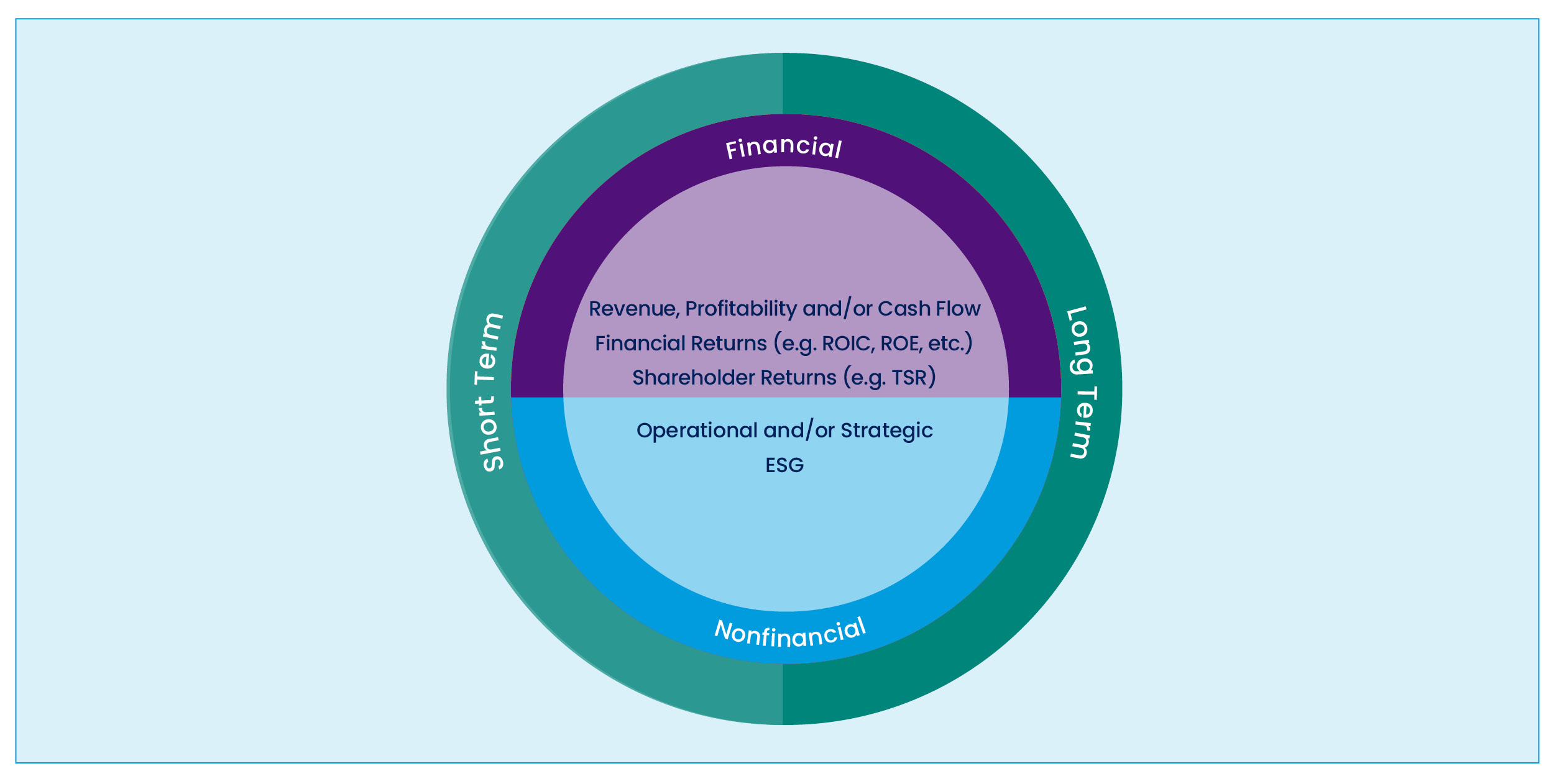For WorldatWork Members
- Compensation Structure Policies and Practices, research
- Compensation Committee Toolkit, tool
- Why Executive Compensation Is Following the Crowd and Why That Matters, Workspan Magazine article
For Everyone
- How CEO Pay Trends Reflect a Changing Performance Landscape, Workspan Daily article
- The Impact of U.S. Policy Changes on Comp and Talent Management, Workspan Daily article
- Consider Performance Targets for Setting Executive Incentive Goals, Workspan Daily article
An organization’s refined annual operating plan and longer-term strategic plan in a new year can spark conversations in the C-suite and boardroom about executive incentives. These conversations include questions like:
- Are we using the right profit metric?
- Is it time to add stock options?
- Should we change our weighting on total shareholder return?
- With more organizations tying performance measures to environmental, social and governance (ESG) initiatives, should we do the same?
Even if raised only for consideration, such questions risk being interpreted as imperatives. If the CEO mentions stock options, TR might think it’s time to include them in this year’s equity compensation awards. Or if a board member says some companies are adding ESG measures, that point could be heard by other leaders as a need to add ESG metrics to their own programs.
While these types of modification ideas are offered with best intentions in mind, they too often result in program tinkering. For example, abrupt changes made to short-term incentives (STIs) without considering the long-term incentive (LTI) plan adjustments made just last year can be short-sighted.
This demonstrates an insufficient regard for the overall performance measurement framework that supports the company’s strategy, stakeholder interests and pay-for-performance objectives.
Return to Your Performance Measurement Roots
Before acting on these topics of conversation, organizations must revisit their executive incentive program’s performance measurement framework: performance categories; performance metrics; and relative weightings across both STI and LTI. This essential approach ensures that the incentive program — and potential changes to it — continues to support the organization’s go-forward strategy (see the performance measurement framework figure below).

How to Approach Incentives Alignment
Going back to the nature of your business when you plan executive performance incentives is important. You can start with four actions for aligning your STI and LTI plans to your organization’s objectives.
1. Ensure that strategy and lifecycle — not typical practice — drive your performance measurement framework. “Typical” practice often is misconstrued as “best” practice. Resist the temptation to believe that misconception. Because your organization competes under its unique service and/or product proposition, your performance measurement framework should support your organization’s strategic pillars and stakeholder interests. Don’t mirror what competitors do with their executive incentive programs; typical practice may not necessarily be the best fit for your organization.
2. Let your framework determine incentive pay delivery, not the other way around. Buck the buzz and momentum around a particular design du jour among competitors. Instead, ask (and answer) this question: “What are my organization’s most important measures of performance in the coming year and a few years after?” From there, determine what forms of incentives align with and facilitate appropriate rewards for results.
3. Avoid tinkering; allow your program design to work as intended. Carefully examine an overhaul of your executive incentive pay program every few years, or any time the strategic direction shifts substantially. Unless such a shift occurs, avoid tinkering with the program’s overall structure.
4. Revisit and level-set your framework annually. Every year, ensure your performance measurement framework is still supporting strategic imperatives for the coming year (STI) and the next few years (LTI). Although the executive incentive program’s overall structure should operate as intended, revisit specific performance metrics and weightings annually to ensure the program evolves with your organization.
Set a Strong Foundation
Having a well-thought-out, defensible performance measurement framework in place allows your organization to cultivate a holistic and sustainable approach to planning executive incentive programs. With that framework in place, you can delve deeper into your program’s details and move toward goal setting.
Editor’s Note: Additional Content
For more information and resources related to this article see the pages below, which offer quick access to all WorldatWork content on these topics:






